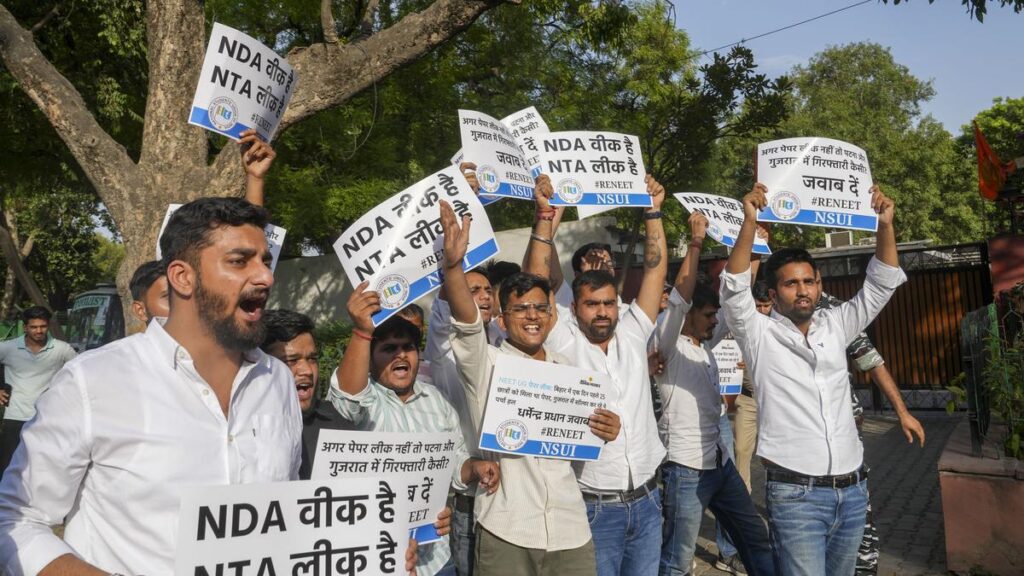On July 20, the National Testing Agency (NTA) announced the center- and city-wise results for the NEET-UG medical entrance exam. This announcement came amid ongoing scrutiny over alleged irregularities, following an order by the Supreme Court. Initially released on June 5, the results have been republished due to several petitions claiming misconduct, including paper leaks, in the conduct of the exam.
Table of Contents
Exam Overview
The NEET-UG exam, a prestigious test for medical aspirants, was conducted on May 5. Over 24 lakh candidates participated, taking the exam at 4,750 centers spread across 571 cities, including 14 cities abroad. The sheer scale of the exam highlights its importance and the logistical challenges involved.
Allegations and Legal Proceedings
Several petitions have been filed, alleging malpractice in the NEET-UG exam. These allegations include paper leaks and other irregularities that could have compromised the exam’s integrity. The Supreme Court, currently hearing these petitions, ordered the NTA to republish the results in a detailed format, center- and city-wise, to ensure transparency.
Supreme Court’s Involvement
The Supreme Court’s involvement is pivotal in this matter. The court is set to resume hearing arguments on July 22 regarding the petitions seeking the cancellation of the results, a re-test, and a court-monitored investigation into the allegations. This ongoing legal battle underscores the high stakes involved for both the candidates and the authorities.
Impact on Candidates
The controversy surrounding the NEET-UG results has left many candidates in a state of uncertainty. With their futures hanging in the balance, these aspiring medical students await the Supreme Court’s decision. The demand for transparency and fairness in the examination process is at an all-time high, as any irregularities could significantly impact their careers.
NTA’s Response
In response to the Supreme Court’s order, the NTA has republished the results in a detailed format, breaking down the performance center- and city-wise. This move aims to address the concerns raised by the petitions and restore confidence in the examination process. However, the NTA’s actions will be closely scrutinized as the legal proceedings continue.
Future Implications
The outcome of this legal battle will have far-reaching implications for the NEET-UG exam and the broader educational landscape in India. If the Supreme Court orders a re-test or a court-monitored probe, it could set a precedent for how allegations of malpractice are handled in the future. This case could lead to more stringent measures to ensure the integrity of high-stakes exams.
Conclusion
As the Supreme Court prepares to resume hearings on July 22, the NEET-UG results remain under intense scrutiny. The republishing of the results in a detailed format is a step towards transparency, but the final outcome will depend on the court’s decision. For the 24 lakh candidates who took the exam, the hope is for a fair and just resolution that ensures their hard work and dedication are not undermined by alleged irregularities.
FAQs
What is the NEET-UG exam?
The NEET-UG is a national-level medical entrance exam conducted by the National Testing Agency (NTA) for admission to undergraduate medical courses in India.
Why were the NEET-UG results republished?
The results were republished following an order by the Supreme Court due to several petitions alleging irregularities in the exam, including paper leaks.
What are the allegations against the NEET-UG exam?
The allegations include paper leaks and other forms of malpractice that could have compromised the integrity of the exam.
What is the Supreme Court’s role in this issue?
The Supreme Court is hearing petitions seeking the cancellation of the results, a re-test, and a court-monitored probe into the alleged irregularities.
When will the Supreme Court resume hearing the case?
The Supreme Court will resume hearing the arguments on July 22.
How many candidates took the NEET-UG exam?
Over 24 lakh candidates took the exam at 4,750 centers in 571 cities, including 14 cities abroad.
